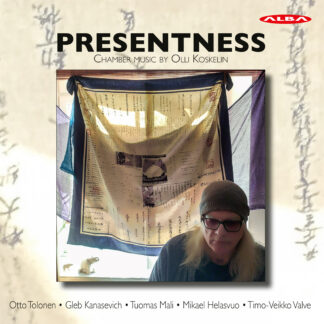Olli Koskelin (born 16 April 1955) was tutored in composition by Jukka Tiensuu and Eero Hämeenniemi as well as the French composer Tristan Murail. Koskelin also studied the clarinet at the Helsinki conservatory and musicology at the University of Helsinki. He has taught music at the Dance Department of the Theatre Academy in Helsinki since 1987. Koskelin has also taught at the University of Helsinki, Sibelius-Academy and Aalto University.
Koskelin’s compositional output reflects a wide range of interests as does his choice of teachers. The wide area covered by his style encompasses the neo-impressionism of the piano work Courbures (1989) and Piano Concerto (1993), to the post-expressionist echoes of his Music for String Quartet (1981) as well as the breakneck virtuosity of his clarinet piece Exalté (1985/1991) and the rich, almost romantic textures of his orchestral piece … like a planet silently breathing… (1993). These three dimensions continued to maintain a presence in Koskelins output.
He often uses the overtone series like the French spectral composers and avoids dramatic culminations in some of his early compositions. Soft harmonics, tranquil arching melodies, a leisurely rhythmical pulse and a coherence of mood are in evidence in his later works as in Uurre (1997) for chamber ensemble, Miniatures (1997) for string quartet and Circles within for 19 solo strings. In a special league of their own are the dance works by Koskelin – an example is Coldstar (1992), lasting over an hour in performance, the material of which is derived from … like a planet silently breathing.
One of the most delicate of Koskelin´s vocal works is Breaking the Silence (1991) for soprano and five instruments, the clear, bright soundscape of which was inspired by eight haikus by Matsuo Basho tied together in a close-knit, subtly meditative entity. Japanese haiku poetry also inspired Koskelin at a purely instrumental level in Seven Haikus for flute and guitar (2019).
In his works of the third millennium (e.g. Tintinnio for solo flute, 2003, Tintinnio II, 2021, Flute Concerto 2001 and String Quartet No. 1, 2004) Koskelin has continued his search for delicate timbres, but he also displays features harking back to the expressionism of his early career. A few examples of this combined style are Cello Concerto (2012/18), X´three for solo cello (2003/18), Animal II (2019/20) for Bass Clarinet and Piano Concerto II (2022).

